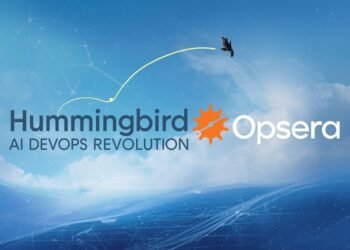🔁 DevOps: Beyond the Toolchain
Barbara Capasso | Levelact.com
For years, DevOps has been narrowly defined by its automation capabilities—CI/CD pipelines, infrastructure-as-code, container orchestration. While those technologies are critical, DevOps is more than automation. It’s a cultural philosophy rooted in collaboration, adaptability, and continuous feedback.
To unlock the full power of DevOps, organizations must rethink their assumptions. It’s not just about speeding up software delivery—it’s about transforming how teams work together to create value.
🤝 The Relationship Between DevOps and Agile: Cultural Glue
DevOps and Agile are often treated as separate initiatives, but in truth, they are deeply intertwined. Agile introduced principles like iterative delivery, customer feedback, and self-organizing teams. DevOps brings the tooling and infrastructure muscle to support those principles at scale. These values are rooted in the principles first outlined in the Agile Manifesto, which emphasizes individuals and interactions over processes and tools.
Together, they create an ecosystem where:
-
Agile informs the “what” and “why”
-
DevOps delivers the “how” efficiently and reliably
Yet many organizations implement DevOps without cultivating the Agile mindset. Automation gets deployed, but silos remain. Pipelines run fast, but feedback loops are broken. DevOps without Agile is just velocity without direction.
🧠 DevOps Engineers as Agilists: A Role Redefined
A core idea behind Agile is cross-functionality. A DevOps engineer shouldn’t just be an automation expert—they should be an Agilist in their own right. That means:
-
Participating in retrospectives
-
Helping define sprint deliverables
-
Championing feedback loops from production
-
Collaborating across dev, test, and business teams
In this evolved model, the DevOps role shifts from “infrastructure wizard” to orchestration partner—someone who builds systems with people in mind.
💡 DevOps engineers should be trained in Agile values just like developers and product managers.
🔄 From Scripts to Strategy: Positioning Teams and People for Impact
Here’s the uncomfortable truth: many DevOps transformations fail not because of tooling—but because the people side was never addressed.
To succeed, organizations must foster a culture of:
-
Open dialogue
-
Cross-team empathy
-
Iterative improvement
This includes:
-
Redefining success metrics (not just speed, but resilience and satisfaction)
-
Positioning DevOps engineers as trusted advisors in planning and design conversations
-
Allocating time for experimentation (not just firefighting)
📢 If your DevOps team isn’t in the room when decisions are made, you’re not really practicing DevOps.
🛠 Practical Tactics for Evolving DevOps Culture
-
Co-locate DevOps and Agile teams (physically or virtually)
Daily standups, sprint planning, and retrospectives should include Ops voices. -
Use shared OKRs across dev and infra
Avoid “dev done, ops problem” blame loops. -
Run “value stream mapping” sessions
Visualize your delivery pipeline to identify blockers beyond automation. -
Invest in DevOps onboarding
Not just for tools, but for mindset—Agile values, lean thinking, systems theory. -
Celebrate learnings from failure
Encourage blameless postmortems and shared accountability.
💡 Case in Point: DevOps + Agile at a Fintech Startup
A leading U.S. fintech startup implemented GitHub Actions and Terraform modules to fully automate their CI/CD pipeline—but outages still plagued them. Why? The teams weren’t collaborating.
Only after they embedded DevOps engineers into Agile scrum teams, shared sprint goals, and co-owned post-deployment retrospectives did reliability improve.
👉 Automation wasn’t the answer—collaboration was.
🔍 DevOps Is a Human Journey
Yes, tools matter. But the heart of DevOps isn’t YAML files or containers—it’s humans aligning around a shared mission. The real transformation happens when:
-
Engineers feel empowered to suggest process changes
-
Developers understand the downstream impact of their code
-
Ops personnel are no longer gatekeepers, but enablers
When DevOps and Agile come together at the people level, innovation flourishes.
Related Resources:


















